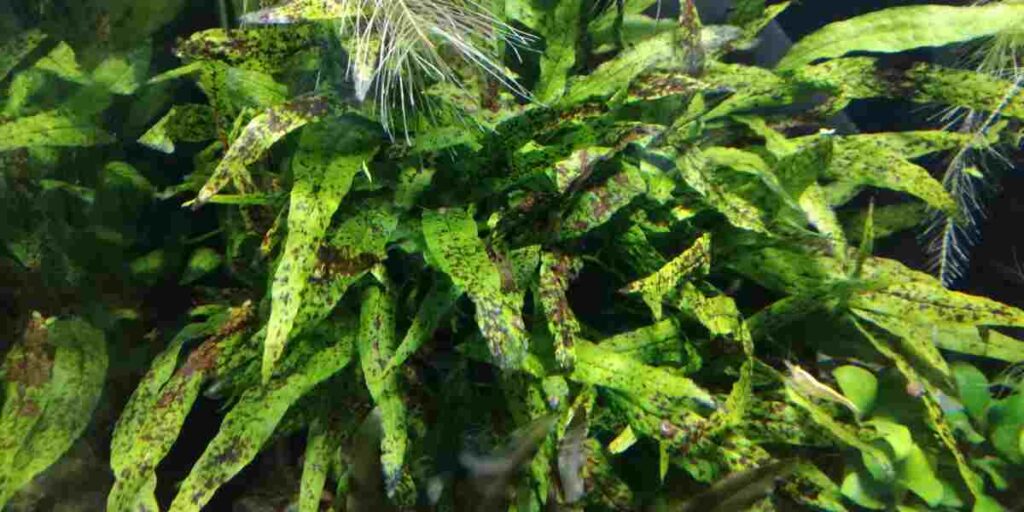Discover how to tackle black spots java fern. Learn the best care and maintenance tips for a thriving aquarium. Keep your Java Fern healthy and vibrant with our expert advice

Aquarium plants, such as the Java fern (Microsorum pteropus), can add beauty and natural balance to your aquatic ecosystem. However, just like any living organism, they can face issues that require attention and care. One common problem many aquarium enthusiasts encounter is the appearance of black spots on their Java fern leaves. In this informative and conversational guide, we’ll explore what these black spots are, what causes them, how to identify them, whether they are contagious, and most importantly, how to treat and prevent them. By the end of this article, you’ll have a better understanding of how to keep your Java fern thriving in your aquarium.
What are black spots on Java fern?
Black spots on Java fern are dark, discolored areas that develop on the plant’s leaves. These spots can vary in size and shape, appearing as irregular splotches or tiny dots. They are a visual indicator that something is amiss with your Java fern’s health. While they may not always be a cause for immediate concern, addressing them promptly is crucial to ensure the continued well-being of your aquarium plant.
What causes black spots on Java fern?
Several factors can contribute to the formation of black spots on Java fern leaves:
- Poor Water Quality: Inconsistent water parameters, such as fluctuating pH levels, high ammonia, or nitrate concentrations, can stress the plant and lead to black spot formation.
- Nutrient Deficiency: Java ferns require essential nutrients like iron, potassium, and trace elements to thrive. A deficiency in these nutrients can result in black spots and overall poor plant health.
- Low Lighting: Insufficient or inconsistent lighting can weaken the plant, making it more susceptible to black spot development.
- Disease and Fungi: In some cases, black spots may be a result of fungal infections or bacterial diseases affecting the plant. These can be contagious to other plants in your aquarium, so it’s important to address them promptly.
- Algae Growth: Algae can sometimes attach to Java fern leaves, creating black spots. This is usually a sign of excess nutrients and inadequate maintenance.
How to identify black spots on Java fern
Identifying black spots on Java fern is relatively straightforward. Here’s what to look for:
- Discolored Areas: Observe the leaves of your Java fern closely. Black spots will appear as dark, discolored patches distinct from the healthy green of the plant.
- Irregular Shape: Black spots can range from tiny specks to larger irregular shapes. They may have fuzzy or rough textures, depending on the cause.
- Spread: Pay attention to whether the spots are spreading across the plant’s leaves or if they remain isolated. This can help determine the underlying issue.
Is black spot on Java fern contagious?
The contagious nature of black spots on Java fern depends on the root cause. If the spots are a result of a fungal or bacterial infection, there is a risk of them spreading to other plants in your aquarium. Therefore, it’s essential to quarantine affected plants and treat them promptly to prevent further contamination. Regularly monitor other plants for any signs of black spots or unusual discoloration.
How to treat black spots on Java fern
Addressing black spots on Java fern involves identifying the root cause and taking appropriate action:
- Water Quality: Ensure stable water parameters within your aquarium. Regular water changes and the use of a high-quality water conditioner can help maintain optimal conditions.
- Nutrient Deficiency: Add a liquid fertilizer designed for aquarium plants to provide essential nutrients. Iron supplements can help if your fern is deficient in this vital element.
- Lighting: Ensure your aquarium receives adequate and consistent lighting. Invest in a quality aquarium light that suits your plant’s requirements.
- Disease and Fungi: If you suspect a disease or fungal infection, quarantine the affected plant immediately. Consult with a veterinarian or aquatic expert for appropriate treatment options.
- Algae Growth: To combat algae-related black spots, improve your aquarium’s maintenance routine. Regularly clean the tank, remove excess detritus, and maintain appropriate nutrient levels to discourage algae growth.
How to prevent black spots on Java fern
Preventing black spots on Java fern is essential for long-term plant health and the overall aesthetics of your aquarium:
- Maintain Water Quality: Regularly test and adjust water parameters to ensure stability. Adequate filtration and routine water changes are crucial.
- Nutrient Management: Use a balanced aquarium fertilizer and monitor nutrient levels to prevent deficiencies.
- Proper Lighting: Invest in suitable lighting for your plant’s needs. Some Java fern varieties can thrive in low-light conditions, while others require more intense illumination.
- Quarantine New Additions: Before introducing new plants or fish into your aquarium, quarantine them separately to prevent potential disease spread.
- Algae Control: Implement algae control measures, such as controlling nutrient levels and using algae-eating species like snails or shrimp.
You May Also Like:
- Black Spots On Java Fern Leaves
- Water Changes Not Lowering Nitrites
- Do Anubias Or Vals Need Root Tabs
Conclusion
Black spots on Java fern can be a common concern for aquarium enthusiasts, but with proper care and attention, they are manageable and preventable. By maintaining stable water quality, addressing nutrient deficiencies, providing suitable lighting, and promptly treating any diseases or fungi, you can keep your Java fern healthy and vibrant. Remember, a thriving plant not only enhances the beauty of your aquarium but also contributes to a balanced aquatic ecosystem.